As outdoor enthusiasts, there’s nothing quite like the thrill of catching a fish in the wild. But whether you’re a seasoned angler or a novice, identifying the species of fish you’ve caught can be challenging.
Being able to identify different fish species is not only important for conservation purposes, but it can also be essential in following local fishing regulations. Moreover, knowing what fish species you’re dealing with can be helpful if you plan to cook and eat your catch.
With some knowledge and practice, identifying fish species can be a rewarding and enjoyable part of the fishing experience. We will discuss how to identify fish species in the wild. We’ll cover everything from basic anatomy and characteristics to more advanced identification techniques.
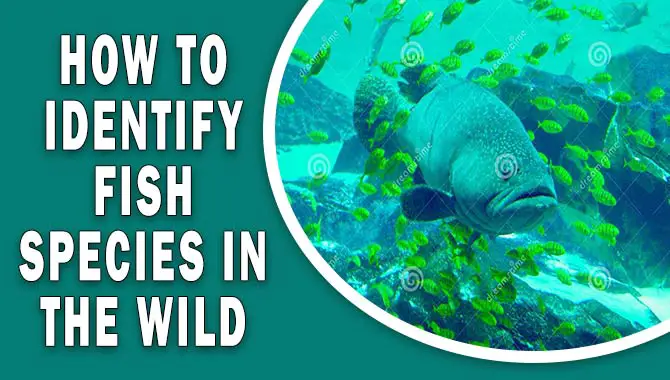
How To Identify Fish Species In The Wild Expert Tips

For successful identification of fish species in the wild, there are several expert tips that you can follow. Begin by examining the physical characteristics such as fins (dorsal fin & pectoral fins) and whiskers (barbels). Gill covers adipose fin and other distinguishing marks like spots on largemouth bass or black stripes on crappie.
Observe behaviors like jumping out of the water while feeding or swimming in schools which can assist in identifying Bass or Catfish easily. Field guides and online resources like pdfs offered by state fisheries also provide information about common freshwater fish species like Trout, Sunfish (Bluegill), or Walleye in North America’s reservoirs.
You could also navigate through Species Information the Wildlife Conservation Society provided to identify specific forage fish used as bait by anglers like Minnow or Crayfish. Here are some tips to help you identify fish species in the wild:
Anatomy Of Fish
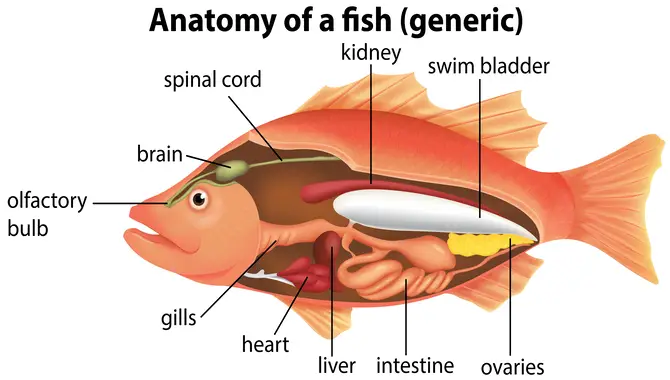
Identifying different fish species in the wild is essential for outdoor enthusiasts who enjoy fishing. Physical features like color, shape, and size are key indicators that help distinguish between different types, such as largemouth bass or crappie.
Observing behaviors and habitats further narrows down potential species like catfish, or wallet understanding-ding the anatomy, like pectoral fins or adipose fins, aids in identification and using field guides for rainbow trout or striped bass. Appropriate information about each species, like common carp or brown trout, helps anglers make informed decisions while enjoying wildlife conservation.
Understanding Fish Behavior And Habitats

Identifying fish species in the wild requires understanding their behavior and habitat preferences. By observing a fish’s behavior and noting its preferred habitat, anglers can narrow down potential species even further. Fish identification guides and mobile apps can be useful tools for identifying species.
Specific behaviors exhibited by different types of fish, such as jumping or surface feeding, can also aid in identification. Additionally, the number and placement of fins on a fish’s body provide important clues for certain species.
Identifying Common Freshwater Fish Species
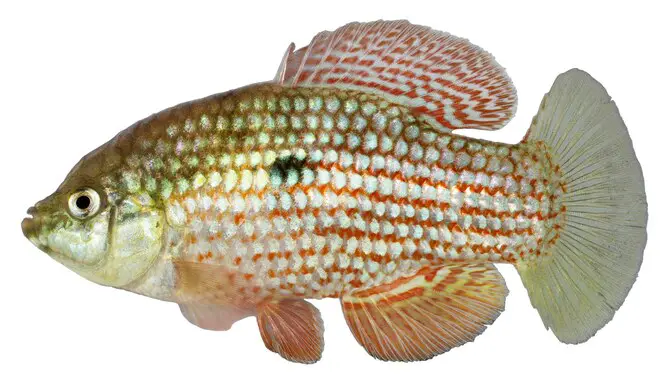
Common freshwater fish species can be identified by their unique physical characteristics like body shape, coloration, and fin structure. Behavioral cues such as feeding habits and location also aid in identification. Largemouth bass has an elongated body shape with a large mouth that extends past the eye.
Crappie has a long dorsal fin with seven or eight spines followed by a rounded anal fin with five or six spines. Walleye’s head is elongated with sharp canine teeth and spiny dorsal fins. Smallmouth bass has a bronze-colored body with dark brown vertical bands on the sides.
Identifying Common Saltwater Fish Species
Identifying common saltwater fish species can challenge even the most experienced anglers. However, with some knowledge and practice, you can become proficient at identifying some of the most common fish species in the wild. Some tips for identifying saltwater fish include coloration, body shape, and fin structure.
For example, species like red snapper have a distinctive reddish-pink coloration, while others like grouper have a more mottled appearance. Additionally, paying attention to their size and location can also help with identification. By becoming familiar with the characteristics of these common saltwater fish species, you’ll be able to appreciate the diversity of marine life better and improve your fishing skills at the same time.
Using Color Patterns For Identification
When identifying fish species in the wild. It’s important to pay close attention to their unique color patterns. Look for distinguishing marks, such as spots and stripes. And other features on their body that set them apart from other species.
Please take note of their overall coloration and observe any distinct physical characteristics like a forked tail or rounded head shape. Anglers can use various resources, including field guides or PDFs, to help them correctly identify largemouth bass, trout, catfish, striped bass, walleye, perch, and many more common freshwater fish species.
Using Size And Shape For Identification
One way to identify fish species in the wild is by observing their size and shape. Take note of the overall length, girth, fins, spines, or color patterns that may set them apart from other species like largemouth bass, crappie, catfish, walleye, trout – both rainbow and brook – sunfishes like bluegill and pumpkinseed or striped bass.
Compare your observations with field guides or online resources of species information on various websites or pdfs available on navigation sites for anglers. Note down any unique feature like whiskers on a catfish’s lower jaw or pectoral fins of muskellunge while comparing with freshwater drum or grass carp to avoid wasting time with common carp. Even threatened species like northern pike can be identified using these techniques.
Using Behavior For Identification
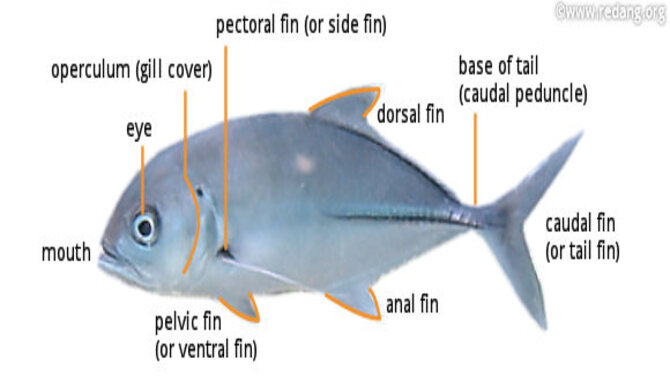
Behavior can be a helpful clue when identifying fish species in the wild. Different fish species exhibit distinct behaviors that can be used to differentiate them from one another. For example, some species are known for their feeding habits, such as surface-feeding or bottom-feeding.
At the same time, others may exhibit distinctive movements or swimming patterns. Additionally, certain species may be more active during specific times of day or in certain water conditions. Observing these behaviors and noting any unique characteristics can narrow down the potential species and make a more accurate identification.
However, it is important to note that behavior alone should not be relied upon for identification, as some species may exhibit similar behaviors. Combining behavioral observations with other identifying factors, such as physical features and habitat, can help to ensure correct identification.
Recording And Documenting Fish Species
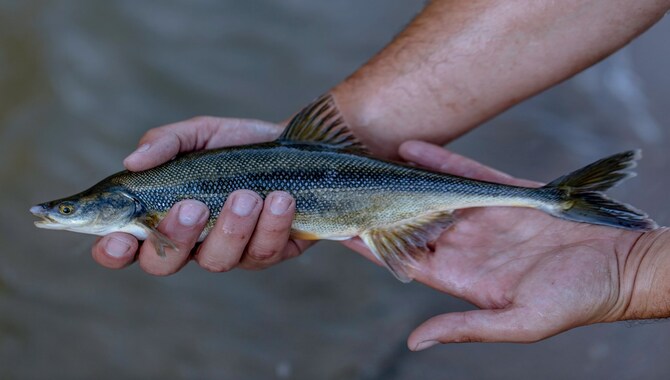
Recording and documenting fish species is important in identifying them in the wild. By keeping track of the different types of fish you encounter. You can better understand their behavior, habitat preferences, and life cycles. One way to record and document fish species is by photographing or documenting them in their natural environment.
This can help you identify them later using field guides or online resources. Another way to document fish species is by keeping a written log of each encounter, including location, time of day, water temperature, and any notable behaviors observed, by keeping detailed records and documentation. You can become a more knowledgeable and skilled angler while contributing valuable information to conservation efforts.
Benefits Of Using An Identification Guide For Fish
Using an identification guide can be a helpful tool for identifying fish species in the wild. One of the main benefits is that it can help you accurately identify different species. Which is important for conservation efforts and understanding the ecosystem.
It can also enhance your overall fishing experience by allowing you to appreciate and understand the variety of fish species in the area. An identification guide can provide information on physical characteristics and habitat preferences. And behavior, all of which can aid in identifying different species. Additionally, using an identification guide can be a fun and educational activity for families or individuals passionate about fishing.
Conclusion
How to identify fish species in the wild? Fish species in the wild is a rewarding and enjoyable experience for outdoor enthusiasts. It requires knowledge, observation skills, and the tools to identify different species accurately. Understanding different fish species’ anatomy, behavior, and habitats is crucial to successful identification.
Field guides can also be an invaluable resource in identifying common freshwater and saltwater fish species. Remember to take note of key identification features such as color patterns, size and shape, and behavior when trying to identify a fish.
Documenting your findings can help with future identifications and contribute to conservation efforts. Remember always to observe local fishing regulations and practices and to respect the environment and the animals that call it home. With practice and patience, you can become a skilled fish identifier and make the most of your next fishing adventure.
Frequently Asked Questions
How Do You Tell What Species A Fish Is?
Identifying a fish species requires observing its physical characteristics, such as color, shape, size, fins, scales, and patterns. Field guides and identification apps can assist you in identifying the fish. Consult with local experts or fishing guides who can provide more information on identifying fish species in your area.
Is There An App That Can Identify Fish?
Several fish identification apps, such as FishVerify and FishBrain, are available, which use photos and other data to determine the species. However, it is recommended to consult an expert or field guide for accurate identification.
Is There A Free App To Identify Fish Species?
Free fish identification apps like FishVerify and FishBrain are available and use photos and location data to identify species. However, remember that their accuracy may not be perfect, so it’s best to double-check with experts or field guides for confirmation.
What Is A Dichotomous Key For Fish Identification?
A dichotomous key identifies fish by their physical characteristics, using a series of choices with two options to narrow down the species. These keys can be found in field guides or online resources, but it’s crucial to use current and trustworthy ones for accurate identification.
Are There Any Specific Behaviors Or Habitats That Can Help Identify Certain Fish Species?
Identifying fish species can be aided by observing their behaviors and habitats. For instance, trout prefer cold, clear water with rocky bottoms and are often found near riffles or deep pools. Bass tends to strike aggressively at lures and bait near structures like logs or weed beds. These factors can help narrow down potential species for identification.

Aquarium passion is all about connecting with the aquatic life and providing education to the public on the importance of these creatures. We showcase a wide variety of marine life through our exhibits as well as working with schools to provide unique learning opportunities for students of all ages.









